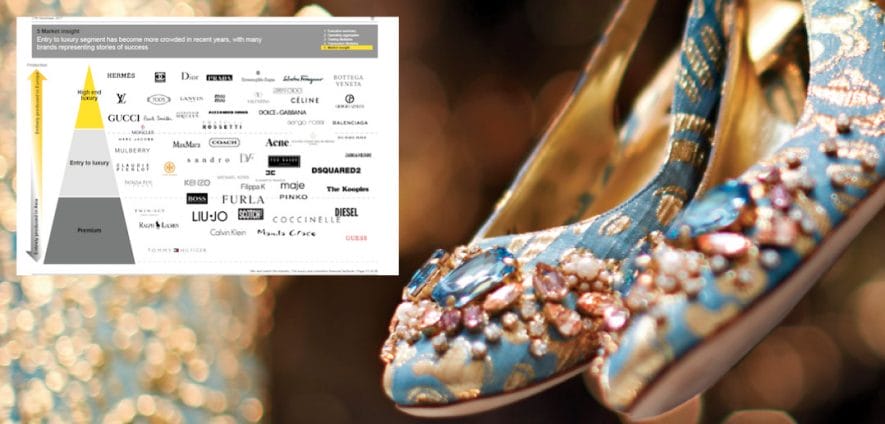The problem is about definitions to some extent. Since “luxury” was not suitable enough, a new term, namely “premium”, came up. Yet, after premium, they created a new, up-to-date expression, “entry luxury”. Yet it is quite clear that such classification is far too often based on price, rather than on real and top (to some extent) quality of the product. EY, formerly Ernst&Young, Consultant Company, suggest (in “The luxury and cosmetics financial factbook” report, on its seventh edition) a new, more specific classification of the luxury segments. In their review they point out that in the next three years, until 2020, footwear will most benefit from prospective growth in sales: +11 per cent in the high-end sector, +7 per cent in premium and entry luxury as well. According to EY, in 2016 worldwide revenues of the high-end luxury reached 318 billion euros, and such figures are expected to increase, until 2020, by 3,4 per cent on annual basis. The premium segment will be actually booming: revenues, which amounted to 100 billion euros in 2016, are expected to go up to 127 billion euros in 2020, thus increasing by 6 per cent on annual basis. Things have turned upside down: from 2009 to 2012 luxury yearly increased by 11,7 per cent, while premium went up to 5,2 per cent. According to EY, premium’s performance will be mainly driven by some specific factors: Chinese middle class purchasing (+7 per cent until 2020), hard luxury rising prices (which will cause the sector to lose some clients), the Millennials’ trend to mix different styles and product ranges (they match a bag by Gucci with a t-shirt by H&M), and the reinforcement of “casualization” (the sneakers’ boom, to begin with).
EY reviews all shades of luxury and their future. Premium, entry luxury and footwear to be on top in 2020










